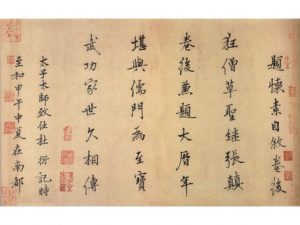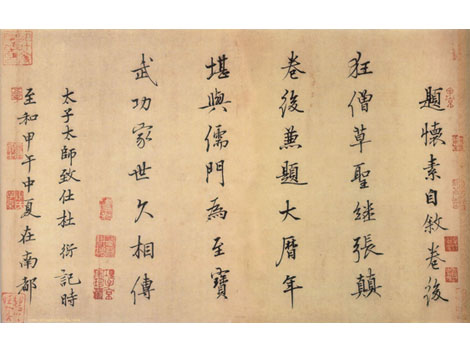Ancient Chinese printing was among the four great inventions of China along with compass, paper and gunpowder making. It had a great impact on the future development of Chinese civilization and its effect elsewhere in the world.

Buddhist chronicles during Wen-ti dynasty
Mention about ancient Chinese printing was found during the time of the emperor Wen-ti when he ordered Buddhist images and scriptures to be chronicled. The original text was written on a very thin piece of Chinese paper to which glue was added and stuck face down on a wooden plate. After carving out the characters, the text was printed on the wooden block printing plate. The carving out had to be done for all the characters as well.
Ancient Chinese printing actually dates back to the 9th century in the present Szechuan province of China which was known as Shu in those days. Printed books like Buddhist scriptures, math books, dictionaries and Confucian classics could be bought from private dealers and within a short period of time, they gave way to two-color printing in black and red as well.
The invention of paper and ink at the time of the Jin dynasty made the stamper technique popular. Woodblock printing was done on silk and three colors were used during the Han dynasty. The onset of Buddhism made the Chinese opt for paper instead of silk as a viable printing medium as multiple texts had to be block printed. The earliest known woodblock printed book was the Diamond Sutra.
Diamond Sutra
It is still known as the worlds oldest printed book and was translated from the original Sanskrit in 400 AD and later on, block printed in China in 868 AD. Archaeologist Marx Aurel Stein found the scroll in 1907 at Dunhuang cave close to the historic Silk Road in the northwestern part of China. The library consisted of thousands of manuscripts, which threw light on ancient Chinese printing dating back to 1000 AD.
Advances in ancient Chinese printing technology were made during the Ching-li period also when the movable type came into vogue. As the Chinese characters and ideograms were very specific in nature, the mechanization process proved too cumbersome. The earliest known Chinese printing technology transfer to Europe occurred in 1300 after which the process was further developed. After being pioneered by the Chinese, printing reached new heights in subsequent centuries.
